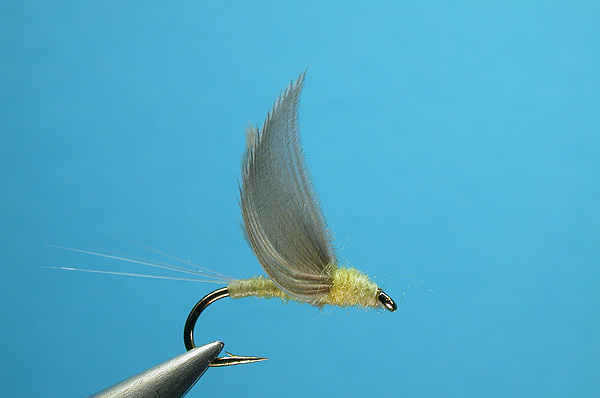Yooper Fly Tyer
Active member
I have stuff to tie nymphs but am wondering what materials to buy if i want to tie dry flies or streamers for brookies


Any specific markers you recommend?You've been given some great advice already, but there is one trick you can put to use to increase the number of flies you can tie without increasing a lot of material. Good waterproof markers.
With markers you can change the color of a strand of grizzly hackle rather than buying a whole bunch of feathers in a different color. That way you can try a new fly color out with the materials you already have. Later you can always buy or dye some feathers in the colors that work for you.
They can be used on lots of other materials too from fur to synthetic. You can add bars to rubber legs, add a hot spot to a fly, add bars or streaks to a streamer.
I usually have a few markers on the stream with me to change a fly to match the hatch when I have nothing close.
Clouser Minnows are excellent flies! There is a video done by Bob Clouser, YouTube and Bob has very specific reasons for how he ties the fly. Watch the video and pay attention to what he says.For bass streamers, the Clouser is by far my favorite pattern. All you need for it is bucktail, hooks (I like #4 gamakatsu stingers), krystal flash, medium painted lead barbell eye, and 6/0 or 140 denier thread.
I do this very same thing and just to add to what Cindy has suggested is also getting some Sharpie NEON markers. These are UV and when hit with a UV light they glow. I usually tie with white thread and it's nice to have several options to change thread and material colors without buying a bunch of everything.You've been given some great advice already, but there is one trick you can put to use to increase the number of flies you can tie without increasing a lot of material. Good waterproof markers.
With markers you can change the color of a strand of grizzly hackle rather than buying a whole bunch of feathers in a different color. That way you can try a new fly color out with the materials you already have. Later you can always buy or dye some feathers in the colors that work for you.
They can be used on lots of other materials too from fur to synthetic. You can add bars to rubber legs, add a hot spot to a fly, add bars or streaks to a streamer.
I usually have a few markers on the stream with me to change a fly to match the hatch when I have nothing close.
I found those to be more difficult to tie than they were worth. At least for me.Do any of you remember the Swisher-Richards no hackle flies? I never got into "match the hatch" never fished or tied their flies. Have any of you had any experience with the no-hackle patterns?
I agree completely with Rip. They are extremely difficult to tie correctly. The problem is that unless the wings are exactly identical in size, shape, and slant on the fly; the fly will spin and twist the tippet.Do any of you remember the Swisher-Richards no hackle flies? I never got into "match the hatch" never fished or tied their flies. Have any of you had any experience with the no-hackle patterns?

